Dobré Rano! The Czech capital awoke with rays of sun on its rooftops. We were fully refreshed and acclimated to the time-zone. It always seems magical to sleep with a window open because we cannot do that simple thing in NYC due to incessant noise pollution. NYC’s government insists on having emergency vehicles blare their sirens constantly, whereas European and Asian cities avoid noise disturbance by only momentarily using sirens in heavy traffic. NYC’s emergency vehicles travel very slowly, as if their drivers are paid by the hour… so the noise pollution of a passing siren exists absurdly for 2 to 5 minutes in any neighborhood. They seem to intentionally want to disrupt citizens. Making things worse, most areas in NYC suffer from construction or demolition noise that is permitted to start illegally before 7:00 in the morning—including weekends and holidays. Useless road construction occurs repeatedly in the same places so overpaid workers can get higher paychecks. Please use this link to understand what we hear in America’s richest city: https://halfwindsorfullthrottle.blogspot.com/2021/11/local-noise-pollution.html
We were glad to be away from that!
Drawing aside the curtains, we peered out the window above the grassy courtyard. To the left, we saw the belfry of a church: a square tower with an “onion dome” made of copper. Punctually at 9:30, its bells became alive with three minutes of chiming. Czech churches provide a lengthy amount of bell-ringing, and we loved every moment. It’s a vibrant break in the monotony, and it usually makes Praguers smile. Please enjoy our video of some of it (turn the sound on)...
In the USA, church bells are silenced by ignorant “Noise Ordinances”… yet the aforementioned noise pollution is allowed. Dumb priorities. Lewis liked the sound so much that he chose a bell chime as his wake-up alarm. (We still use it).
We left the hotel and investigated that church, named for Saint Michael the Archangel.
It was Sunday, so the door was open. That was a treat for us because half of the churches in NYC's Queens County look forlorn like this....
As a functioning church, the one in Prague was free to enter, and it was fascinating to explore.
It is an amalgamation of styles that were added in different eras, and it’s a Cultural Monument of the nation. (Cultural Monuments of the Czech Republic are legally protected by the Ministry of Culture). Its origin was documented in 1115 in a charter issued by Prince Vladislav who was Duke of Bohemia. The church was used as a midway point between Prague Castle and Vysehrad Fortress. In 1348, King Charles IV included it in New Town as a parish church. In 1369, it was rebuilt in the Gothic style, but it was given a trapezoid-shaped chancel, which makes it unique in the city. A school was attached in 1399, and a chapel was added in 1402. During the 1570s, Renaissance builders added higher ceilings. After 1717, the congregation added a Baroque baptistry. In 1791, German Protestants bought the church, and it remains Lutheran. (Trivia: that year, the King of Bohemia's brother-in-law, King Louis XVI, ratified France's constitution to curtail his powers).
It was lovely seeing an unadulterated belfry because most belfries and steeples in NYC are mangled with cellular-boosting towers, because NYC churches want money, as seen below.
We went to the tram stop and saw the tram leaving… but nobody ran to catch it or banged on it to make it stop. We were in a country where citizens don’t run to catch a bus or train. In America, people run daily to catch buses, trains, and subways because they spend their whole lives in a country where public transit is infrequent, unreliable and delayed. It’s refreshing to be elsewhere where things are normal.
The next tram arrived within two minutes. So, we used that time to walk behind Narodni Trida Station and admire the spinning head of a Praguer named Franz Kafka: Czechia's beloved author. Full of marvelous creativity and engineering, the moving statue proves Prague to be a whimsical city!
Lewis and I knew that we had hours before our 12:30 brunch reservations. Since our destination was in Lesser Town, we decided to go to Prague Castle and enjoy the sunshine in its grand courtyards. It would be perfect timing for the daily Changing of the Guard ceremony at midday!
Prague’s tram network has one of the largest fleets in the world: 882 trams operating over 144 km (89 miles) of tracks. As an indication of smart public transport, it extends deeply into outer boroughs and districts. That’s impressive infrastructure!
The tramway began with horses in 1875, and it was electrified in 1891 (two years ahead of NYC). That year, Prague hosted the Worlds Fair, and the ruler of the Habsburg Monarchy visited. Franz Joseph I was Emperor of Austria and King of Bohemia. He came to see the exhibition of Czech Art & Culture. Full of admiration for the city's infrastructure, he assured gentry, councilors, literati, guilds, and clergy that he would continue his financial benevolence with the city.
Thankfully, Czechs didn’t Americanize their cities, and that saved their tram networks.
If you want to find trams or streetcars in the USA, you'll have to look back in time because most of those helpful systems were stupidly destroyed to enrich American car manufacturers, U.S. Steel, rubber tire makers, and petroleum corporations.
Last year, we visited Berlin and learned that half of it was controlled by America for decades after World War Two, so it lost its trams to force people to buy cars made by companies owned by American Automakers (Ford manufactured cars in Germany since 1925 and General Motors since 1929).
But the half of Berlin that was occupied by Soviets retained its trams, and those trams continue to flourish and serve the population better than vehicular traffic.
In Prague, 26 routes of trams serve 380 million passengers per year: the second-highest quantity in the world. There are also 10 routes of “night trams” that operate after midnight.
Impressively, all of the trams are built in Czechia, which has a reputation for excellent rail transport manufacturing. During nice weather, two routes include historic wooden trams that are lovingly preserved since 1905! Praguers love riding on them, and they are often photographed as they roll along their rails and ring their antique bells.
The fleet includes 250 state-of-the-art trams manufactured by a Czech company named Škoda.
Another group of 59 were designed by Porsche in 2009.
Indicative of its love of history, the municipality refurbished 426 vintage trams made from 1960 to 1990 by a Czech company named Tatra.
Tatra was famous since the 1930s for streamlined cars.
The interiors of those trams are as modern as the newest ones, but their exteriors retain a retro streamlined appearance from the 1960s. They have a 98.9% reliability rating!
We liked riding on them: circular headlights, curved roofs, skirted wheels, and bi-color paintjobs. Most of the vintage ones involve two cars that are connected. Those nostalgic ones are beloved by Praguers.
Occasionally, routes are served by a single coupé. (They reminded me of Mr. Rogers’ trolley). We had fun riding on those models, as they whooshed around corners and clanged their bells before rattling along the rails to farther stops.
Lastly, there are 52 Tatra trams from the 1980s and early 1990s with a boxy appearance.
Trams have easy-to-clean seats made of wood or plastic, tall windows, and plenty of digital displays that indicate the route and upcoming stations. Passengers enter through all of the doors—not just at the front. At main stations, all of the doors automatically open. As trams reach the outer boroughs, the doors rely on riders to push buttons to open them. That keeps noise out and air-conditioning in, which is smart. Traveling on trams gave us priority in traffic because pedestrians and cars must yield.
We rode Tram #22, which is one of the most scenic routes in the city.
We were carried over the river, and the route snaked its way through Lesser Town’s narrow cobblestone streets. We sensed an incline, as the tram climbed the castle’s hill.
Through the windows, we saw the slanted stone walls of the castle’s property that stood against the road.
As the tram ascended, Lewis researched the castle online and announced that the Guinness Book of World Records proclaimed it to be the world’s largest “coherent castle”. Wow!
We zoomed past the Summer Palace of Queen Anne (who is buried in the castle's cathedral)...
... which was built as a belvedere in 1538.
The Summer Palace was a royal property, and it is still the purist Renaissance building in the country. It’s one of finest pieces of Renaissance-era architecture outside of Italy! King Ferdinand hired Italians to do it, and he dedicated it to his wife, Anne: a princess of the King of Bohemia & Hungary. When the Renaissance spread from Southern Europe, Prague was its first destination… and the city embraced it! During the centuries, the Summer Palace was used to entertain royal guests, provide a tranquil oasis for royalty, and it sustained an astronomy observatory. The fountain is original from 1573!
Looking to our right, we saw the Ministry of Defense.
As our tram circled the north side of the castle, we looked through the windows and admired the Powder Tower.
The road is separated from the castle by Stag Moat: a natural ravine.
When defense of the castle wasn’t a concern, the moat was reduced to a stream.
During the reign of Emperor Rudolf II...
...deer hunting occurred there, and that gave the moat its everlasting name. Now, the moat is used as a public park with grassy hills, and paths crisscross its 8 hectares (20 acres).
Since 1962, the entire area of the castle is protected as a National Cultural Monument. Near the former Slechtova Restaurant is a Water House decorated with a royal crown. It’s the opening to the underground tunnels that Rudolf II commissioned as a secretive engineering project to make a water conduit. Existing since the late 1500s, it was intended to help the animals thrive in Stromovka Park: the Royal Deer Park that began in 1320. The tunnel stretches for 1,102 meters! (That 250-acre park is still a national favorite).
North of Stag Moat, the Royal Gardens exist between the Summer Palace and the presidential mansion. They were first planted in 1534, and they are open to the public for free enjoyment. Alas, for tram passengers, most of the 8.9-acre gardens are obscured by a stone wall.
A gated driveway appeared for access to the “Ballroom of Prague Castle”, which was built in 1568. It is 80 meters long. Styled with Renaissance flair, it was intended for ball games, but it was repurposed in later centuries for ballroom dancing.
Underground, the land contained a huge Slavic graveyard from the 900s—including many courtiers of the princely court. Emperor Rudolf II put farm buildings there and bred “imperial pheasants”.
At a traffic light, a cobblestone road named U Prasneho Mostu entered the castle grounds and aligned with the original bridge that spanned the moat. We exited the tram there.
The road had cafés, a fire station, the mammoth Castle Riding School & Stables (from 1694),
a modern orangery / greenhouse,
the presidential mansion, and the villa of the current president.
Built in 1852, the villa was purchased by the government in 1925. In 2004, the presidential couple chose to live there, so public access wasn’t restricted at the castle by their occupancy of the mansion. The current president resides there with his wife, too.
Lewis and I were mesmerized by the unspoiled preservation of history! We walked through the Imperial Stables to see its café terrace.
Serenity! As you can see, Praguers enjoy mild temperature in February for outdoor seating.
We crossed the bridge to enter the castle through its side entrance.
It accesses the castle from this angle...
The first version of Powder Bridge was erected by King (later Emperor) Ferdinand in 1535. (He and Queen Anne were crowned in the castle in 1526). It was a covered one made of wood. Its name came from the gunpowder mill located under it, powered by the stream. It burned down during the Great Fire of 1541. The next bridge was damaged by French troops in 1742, during the War of Succession of Maria Theresa… which she won. (During that time, the invading French Army appeased Praguers by improving the city’s fortifications, building palisades, repairing drainage, and creating new placements for canons. Empress Maria Theresa wanted to remove the French, and Prince Lobkowicz negotiated their departure so she could be crowned in the castle). Alas, that bridge was destroyed by Prussian troops during the Seven Years’ War of 1757. The current bridge is supervised by handsome members of the Castle Guard, who I’ll describe soon.
The bridge is very tall, and the ground is far below.
Peering over the railing into the ravine, we saw commuters and tourists using its walkways. A nifty tunnel gives pedestrians access under the bridge, and it is illuminated with modern lighting.
Nearby, two “cages” exist as caves in the wall. A water-fountain made me think that they were doghouses. Perhaps former kings had hounds that patrolled their property, and those fierce animals lived there? No, they were inhabited by bears in the 1920s!
Soaring up overhead, the towers of Saint Vitus Cathedral pierced the sky from within the castle walls.
We admired the north side of the castle. Mostly unchanged, it retains its medieval style: stone walls, and round towers with conical roofs.
(The south side was “modernized” in the 1600s because the city-center existed, and aristocrats built their mansions against that wall, so its towers were reduced).
There is another difference that makes the castle stand-out from others in the world. If you visit castles in England or Ireland, they have crenelated walls and battlements. Don’t expect that in Prague. The lengthy walls of Prague Castle are stuccoed and painted. That refinishing was possible because the castle was protected by an outer layer of stone walls and lookout towers. Nonetheless, the main walls are very tall, sheer, and imposing.
Before entering the castle, we paused to admire the gateway. Copying many visitors, Lewis posed for a photo in front of the Castle Guards who were stationed at that entrance.
The pair of guardsmen were augmented by some army soldiers wearing camouflage fatigues. A policeman was nearby, too.
The Castle Guards have an illustrious history.
As the badly-mismanaged Austro-Hungarian Empire imploded, Czechs and Slovaks united in 1918 to form a new nation: Czechoslovakia. They strategized that “there was safety in numbers”, so they joined together for solidarity. Prague remained the capital of the new nation, and the government continued to operate around Prague Castle. Within months, the nation’s Military High Command designated part of the 28th Infantry Regiment to form the Castle Guard. Members of the Castle Guard still protect the castle and provide sentries for it throughout the year, in all weather.
December 7 was their 105th-year anniversary. They are an elite group of men who are selected because of their meritorious service, rank, height, gun/sword skills, and fortitude. The Castle Commander is Colonel Jaroslav Ackermann. He is in charge of the soldiers, and he reports to the President—who has an official residence inside the castle (in addition to the villa). Uniquely, the guards do not report to the Minister of Defense; they answer to the President. Constitutionally, they are separate from the Armed Forces. Yet, they accomplish military training with the Czech Army.
The Castle Guard is a brigade with two battalions, a military band, two platoons of reservists, and separate platoons of motorcycle escorts, transport personnel, K-9 squad, and logistics. There are 900 troops.
Guards are garrisoned in Prague and Lany, and their physical training camp is located in Juliska. Bootcamp for recruits is in Dobra Voda.
Since 1960, the barracks in Prague is located inside the Martinic Palace on Loretanska Street. The soldiers are armed with pistols and rifles, but they add shiny bayonets for ceremonies. Officers are armed with swords and pistols.
*Trivia: The word "pistol" originated in the 1300s Middle Ages from a Czech word "píšťala" (hand canon).
Their insignia represents the coat of arms of the nation’s three regions: Bohemia, Moravia, and Silesia.
As the seasons change, you will see their uniforms change. As a graduate from America’s prestigious Fashion Institute of Technology, Lewis is enamored with their spiffy classicism and vibrant color-scheme. The standard uniform involves a dark-blue tunic, black-visored hat, and grey trousers with stripes down the legs. Brass buttons, epaulettes, a gold-buckled belt, and tri-colored aiguillettes adorn their tunics. For a classy appearance, they wear white gloves.
Their shoes are always faultlessly polished, and their black sunglasses add "cool" panache.
In colder months, they add dark-blue overcoats with fur collars.
If the temperature is particularly chilly, they wear fur-trimmed hats and white scarves.
In the summer, they change uniforms and wear sky-blue tunics and trousers with black-visored hats, white gloves, and black sunglasses.
To add a summery flair, they wear white cravats.
The resplendent uniforms were designed in 1990 by a Praguer named Theador Pistek. He won an Oscar for his designs in the 1984 film, Amadeus! At that time, the Czech president, a Praguer named Vaclav Havel, wanted to replace the dull uniforms from the Soviet Occupation, so he hired Pistek. It was a success. In our opinions, the guardsmen are a handsomely-attired group—looking dignified for their work.
Guard duty is their primary function at the castle, and it requires psychological resilience to avoid distractions and remain alert.
The castle has three gates that are manned by sentries in guardhouses. Lewis had fun posing in one of the huts.
Guards are also stationed at the Security Bag-Check areas. They are tasked with guarding the Crown Jewels that are within the castle—and those have the most preserved appearance and intriguing legacy in Europe! (I’ll mention them in Part 3). Guardsmen protect the president, his offices inside the castle, and his official residence in the castle.
They perform ceremonial roles for State Visits and national events, and they serve the nation on foreign soil. Occasionally, they partner with royal guards or presidential guards from other nations as cross-training experiences. Domestically, they are deployed for emergency management operations during a disaster or civic crisis. They are renown for fulfilling all of their duties with high standards. That includes the choreography of swordsmanship, rifle-maneuvers, and marching patterns during festive events. Before our trip, Lewis and I watched online videos of their marvelous techniques and amazing showmanship!
When delegations and VIPs come to the castle, the Castle Guard provides the motorcycle security escorts for their cars, and then the military band, honor guard, and protective sentries for their arrival. From that point onwards, the guardsmen secure the grounds during their visit. The Castle Guard has a global reputation for impeccable conduct.
Unlike other nations that merely use office buildings or mansions to host dignitaries and world-leaders, Prague uses its massive castle. Queen Elizabeth’s State Visit in 1996 was one of its most important national events because she only made three State Visits per year, and they were often to Commonwealth Nations. President Havel personally invited Her Majesty, and crowds were elated when she arrived at the castle.
In 2015, the castle welcomed His Serene Highness, Albert II, the Prince of Monaco. In 2016, Xi Jinping was the first Chinese president to be hosted at the castle in 67 years. As members of the British royal family, the Earl and Countess of Wessex visited in 2017 to meet the president.
Last year, the earl—now the new Duke of Edinburgh—returned to bestow awards to graduates of the Duke of Edinburgh’s Award, established by his father in 1956. 5,000 young Czechs participated in its program of fitness and volunteerism.
As you can imagine, we were ecstatic to watch the noontime ceremony, which occurs every day, but we gave ourselves spare time to see the courtyards. Anyone may enter the castle; it is free. The government believes that it should be accessible to the people. Admission fees only apply to certain buildings. As such, it’s a local pastime to stroll through the majestic castle—especially during sunsets to admire the light glinting off the handsome buildings.
Upon entering the castle, we were in the Second Courtyard, which is a pretty place that is paved with marble. The buildings are painted in bright yellow and white, with red or black tile roofs.
It was distinguished by a Baroque-era fountain built in 1686. An old well was covered by a domed iron gate that had impressive scrollwork.
Behind the castle’s south wall is the Paradise Garden, established in the 1500s by Archduke Ferdinand of Tyrol. A pavilion remains from that time.
Lewis and I proceeded inward to the Third Courtyard, which is paved with granite.
Arriving through an archway in a building adds dramatic suspense before you encounter Saint Vitus Cathedral! The archway “frames” the scene perfectly: visitors glimpse the steps and doors of the cathedral, but its height is concealed until they emerge. Then, everyone’s necks crane upward to ogle the soaring towers! It’s fun to watch. Please see it in my video, and turn the sound on...
The cathedral is glorious, and I’ll describe it in the next segment because we toured the castle during the next day.
To the left was a squared tower with diagonal windows.
To the right was a churchly mansion that was surrounded by crowds.
We evaded the crowds and went left. That is the cozier side of the castle, because the cathedral is off-center towards the castle’s north wall.
It forms a narrow cobblestone lane named Vikarska (Vicar) Street, which was inhabited by the clergy’s servants in the 1500s.
A red-and-beige building from the Renaissance was refaced in 1705 and has always been used by the Dean of St. Vitus.
A school existed for the vicarage, but it is now used by the Vikarka Restaurant, with a great view of the cathedral and another perspective from the rear area.
Other structures are built against the wall: a police station, governmental offices, a cafeteria (open to castle employees and visitors). At the end is a café with outdoor seating and views of St. George’s Square, which is paved with cobblestones.
New construction in its rear courtyard added two sleek places to buy beverages: Starbucks (we dislike) and Bubblify for bubble tea (we like).
Please enjoy Lewis' panoramic video of the scene in front...
We certainly were inside a beautiful castle!
Lewis and I took time to study the cathedral’s façade up-close: gargoyles, corbels, tall pinnacles, iron doors, wooden doors with fanciful wrought-iron hinges, tympanums, keystones, buttresses, and see-through stairwells going up to the roof. Its dual towers are dotted with crockets. The craftsmanship is marvelous.
Filling the south wall of the Third Courtyard is the Old Royal Palace, which I'll describe in Part 3.
It has an elevated covered walkway into the cathedral. We went under it, and it reminded us of the Vasari Corridor in Florence.
After that bridge, the New Royal Palace stretches for the length of the entire courtyard. Please enjoy Lewis' panoramic video, and turn the sound on...
Seen above (with the flag) is where the President’s offices are. Indicative of a trustworthy society, the presidential building was neither barricaded nor rigged with spiked fences, barbed wire, or sniper soldiers… as they are in America. Czechs are able to walk directly to the portico without being confronted or handcuffed. Accessibility is the hallmark of a successful society. People posed for photos by the presidential entrance. Above them, a balcony is where the regimental band performs fanfares for the President’s events.
Hundreds of visitors took photos of the marvelous surroundings. Sunlight reflected off the cathedral’s gold metal grille and gold-leaf paint. Seen below, the enormous South Tower has a dual-operating clock: separate dials for hours and minutes. They are powered by the same mechanism from the Renaissance era of 1597! In that early era of clockmaking, it was difficult to get both hands arranged in the same dial, so their gears had enough space. Beneath the clock is a gold monogram: the Royal Cypher of Emperor Rudolf II.
Glancing at my trusty Cartier wristwatch, it was time to get a good viewing-location for the Guard Ceremony.
We exited the castle via the Fourth Courtyard...
... and went to the forecourt that is officially named the First Courtyard.
A crowd pressed against the gilded fence, but we got excellent places to stand before the crowd tripled in size!
Smartly, we stood near the massive gateway, so we could watch the new guardsmen march in. We were positioned close enough to admire the guards' uniforms.
The First Courtyard is used as a Court of Honor for national ceremonies, State Visits, and diplomatic events. Dignitaries are always greeted by a formation of the Castle Guard and its military band. For centuries, it has been the castle's main entrance and exit.
Until the 1750s, visitors needed to cross a drawbridge to enter. Otherwise, a defensive moat kept people out. An architect named Nicolo Pacassi was hired to fill the moat, remove the bridge, and make a stately entranceway. He succeeded! Castle Gate is an ornamental fence that wraps around the forecourt.
The actual gate is a national landmark from 1761, and it features a “Clash of the Titans” that was chiseled by a Baroque-era sculptor named Ignac Platzer. He was born in Prague. We admired his large stone sculptures that stand on the gateposts. Towering over the guardhouses, they depict nude muscular men wrestling with deadly weapons: bronze clubs and daggers.
They are certainly eye-catching, and we pondered about who his muscular models were?
A pair of pillars hold the “imperial eagle” and the imperial crown that were iconic of the Habsburg Monarchy. They hold the “Czech lion” as a symbol of Czech sovereignty. The Royal Cyphers (monograms) of Empress Maria Theresa and Emperor Joseph II are emblazoned on the gates.
Guardhouses on either side were occupied by guardsmen. Unflinching to the spectators and photos, they remained statuesque. Clearly, inspections are top-notch, and the men wore their uniforms well: crisp, ironed trousers with perfect creases, gleaming brass buttons, shined badges on their hats, immaculate cravats, spotless shoes, perfectly polished bayonets on their rifles, and aiguillettes that dangled perfectly. Nothing short of a backwards somersault could dislodge their appearance.
The crowd swelled as all types of people came to admire the ceremony: children, young couples, tattooed guys, burly men, teenagers in shorts, senior citizens, and fathers with sons hoisted on their shoulders.
Suddenly, we heard a march performed by the regimental band that arrived.
For the daily Changing of the Guard Ceremony, musical accompaniment is provided by “The Band of the Castle Guard and the Police”.
They are also the fanfare orchestra for presidential occasions, and they provide music for inaugurations, award ceremonies, investitures, and the appointment of judges. Their public concerts raise money for charities. For VIP events, they are uniformed in red tunics, dark-blue trousers with red stripes, white hats, and white leather belts. That day, they were attired in dark-blue overcoats with red cuffs, trousers with red stripes, white belts, white hats, white scarves, white gloves, and shiny black shoes. The musicians marched into the courtyard, which drew everyone’s gaze forward.
The focal point of the courtyard is a monumental stone gateway that is part of a majestic building. Matthias Gate was installed in 1614 by a Holy Roman Emperor named Matthias.
Later, the ornate building was built over it.
We admire a punctual society, and the Castle Guards readied themselves with precision. Soldiers in camouflage uniforms and berets arrived at the gates to keep the crowd back.
A squad of the outgoing guards got into a formation. The regimental band began playing stately music—with stentorian qualities. Marching towards the castle, a squad of incoming guards paraded through the crowd that waved and cheered for them.
Selfie sticks rose into the air, and foreigners were agog with awe. The guardsmen marched past us. Their buttons and bayonets shined so well that you needed sunglasses to see them.
They formed into rows and faced their brethren. A banner of the Castle Guard was exchanged to signify the new squad that would occupy the castle and provide sentries for the next 24-hours. A Captain of the Guard performed an inspection.
Then, threesomes proceeded to the separate gates around the castle. They marched in a unique way: an elongated process of lifting each foot to hover and extend forward. The smooth motions required effort and training. It looked like this...
A trio of Castle Guards arrived by the main gate. One of them turned on his heel and faced inward. The other two marched to the edges and then turned on their heels to face the guardhouses.
The outgoing guardsmen came forward and stepped aside.
The incoming guardsmen marched past them into the guardhouses and spun around. The outgoing guards stood in front of them for a moment and then marched away. Here is a quick video of it...
Each portion of the routine was marked by a tapping of their rifles on the pavement.
The president is lucky. We think that being surrounded by such handsome protectors is very nice!
The last time that we saw a Changing of the Guard Ceremony was at the royal palace in Oslo. To see that, please use this link: https://halfwindsorfullthrottle.blogspot.com/2023/08/our-trip-to-oslo-norway-storting.html
With the daily ceremony over, the crowd dispersed.
Many people stood the admire the scenic lookout that the square has over the city. You don’t realize how high up you are until you gaze over Prague’s rooftops.
Glancing at our watches, it was time to walk to our brunch destination in Lesser Town. This it the coat of arms for Lesser Town...
We chose the wide cobblestone road named Ke Hradu that curved downward and hugged the castle walls. It gave us many picturesque moments!
Thanks to Prague's priority of preservation, it looks unchanged from the 1700s, and it is often used for filming "period piece" movies.
The road connects with two famous old stairways to the castle. Seen in the photos above, it goes to The Town Hall Stairs: 100 meters (300 feet) with 127 steps that reach the district's former Town Hall. Seen below, it also goes to the picturesque Castle Stairs: existing since 1278 with a length of 160 meters (525 feet) and 220 steps.
Nicknamed as the "Royal Route", the 2.5 km (1.5 mile) path was used by Bohemian monarchs for coronations and festivals since the 1400s.
It starts in Old Town at Republic Square—which was a courtyard for a royal residence that stood there—and it goes through the elegant Powder Tower. Moving along Celetna Street, it passes through Old Town Square, pausing at Charles University where monarchs accepted pledges of loyalty. It uses the Charles Bridge over the Vltava River to Malá Strana where that mayor gave the Keys of the City. The route rises steeply uphill on Nerudova Street to reach Prague Castle. It concludes inside St. Vitus Cathedral.
Prague was always a wealthy city, and that is evidenced by the vast quantity of elegant townhouses, mansions, and palaces that were built from the 1550s to the 1930s. Lesser Town has no shortage of them. Posh shops in pastel-painted buildings lined both sides of many streets.
Reminiscent of our trip to Florence, the streets were paved with cobblestones. Occasionally, they may be uneven. But they are superior to the dilapidated streets in New York City, as seen below...
Overpaid road crews use inferior bituminous asphalt (derived from petroleum to keep American petroleum companies happy). It deteriorates within months, and the crews get paid to work on it again. It looks horrendous like a third-world country.
Similar to what we saw in Florence and Amsterdam, many old houses in Prague have curious-looking Gable Plaques. They gave clues about the original owners.
Underneath some of those beauties, their medieval foundations provide antiquated ambiance.
Famously, Mozart was a guest at the Bretfeld Ball in 1787 at Bretfeld Palace on Nerudova Street. We admired it, and it still looks beautiful.
For comparison, the island of Manhattan was settled in the 1640s. There are 62,000 of buildings on it. Yet, none were preserved from the 1600s! That history and heritage of the United States of America is gone forever. Also discarded were nearly all of the historic structures from the 1700s during the birth of America and half of the ones from the 1800s. Full of greed, NYC preferred to demolish them, so it could add ever-taller buildings with ever-smaller spaces, so it could squeeze more profits from its occupants. Profit always outweighed preservation. Irreplaceable buildings were never harmed by any war, yet NYC’s greed destroyed all but six from the 1700s: one is the mayor’s mansion, one is a church, and one is a house at the northern tip of the island—so it escaped destruction. One survived amidst the Financial District’s skyscrapers because it is attached to a chapel where George Washington was sworn-in as the nation’s first president. Of the 13 Colonies, New York was the sixth-largest, so its destruction of history was a deliberate disrespect to the entire nation. In contrast, Prague preserves more history than NYC—yet it also modernizes more than NYC! While overpaid NYC authorities claim that such things can’t be done, Prague proves otherwise… as do many cities in other countries.
Prague’s terrain explains why Praguers have shapely legs!
We arrived at Lesser Town Square. It’s a busy junction for tram routes. Just beyond the square was our destination.
We had reservations for Sunday Brunch at the Augustine.
It’s in the diplomatic district on Letenska Street: a road from the Middle Ages that is named for Letna Hill. (The hill is adjacent to the 25-hectare [62-acre] Letna Park on a steep plateau above the river. The name derives from the old words for “summer-camp” and “sunbathe”). The hotel is near the Embassies of Estonia, Japan, Serbia, France, and the Kingdom of Denmark.
The Augustine Hotel is located on a tram thoroughfare (prettily paved with cobblestones), and it’s fun to watch trams roll through a tunnel in an old building.
That old building has Gothic cellars from 1406. In 1548, it was redone by a nobleman from the Lobkowicz family who was Marshal of the royal court. Now it houses the Czech Chamber of Architects.
This is the hotel's entrance. It is subtle.
In the 1200s, the site was a monastery for the Order of Saint Augustine. Now owned by Marriot, it is classified as one of their Luxury Collection Hotels. The facility includes several historic buildings, and they are protected as Cultural Monuments.
The location is prestigious because the walled garden abuts the Valdstejnsky (Wallenstein) Palace, which is used by the Senate.
Czech heritage is “alive and well” at that 5-star hotel: the Rectory Bar retains its frescoed ceiling, and the monks’ original recipe of Saint Thomas Beer is replicated on-site and served in the old brewery building that was preserved.
A few monks still reside in a separate part of the monastery! The hotel retains direct access to the adjacent Saint Thomas Church, which is 739 years old and named for the apostle.
The church is impressive. In 1285, King Wenceslaus II of the Přemyslid Dynasty and Queen Judith of the Habsburgs built it for the Augustinians, and they put it next to the monastery. (Yet, they had their coronations at Prague Castle). The main altar was consecrated in 1315. The floor has 24 tombstones, which is similar to medieval churches that we saw in Dublin and Amsterdam. The church was ruined during the Great Fire of 1541. 155 houses also burned down—which was more than 60%. The empty land allowed space for new Renaissance architecture, and that helped St. Thomas. A new belltower was built, and it still contains a bell that was forged in 1652. In the nave, the Baroque-era frescoes were painted in the 1720s by a Praguer named Vaclav Reiner. In 1637, Peter Paul Rubens painted the magnificent scene of Saint Thomas’ martyrdom. (The original is now in the National Gallery).
*To see the St. Thomas that we enjoyed in Manhattan, please use this link:
https://halfwindsorfullthrottle.blogspot.com/2014/12/lessons-carols-at-st-thomas-church.html
Considering that it occupies a churchly site, it seems apropos to say that the hotel’s walled garden and glass-enclosed terrace provide a “sanctuary” in the big city. As we entered the property, we felt enclosed by peacefulness, and the only sound came from a gurgling fountain in the forecourt. Guests arrived silently in electric cars, and the doorman seemed busy.
Brunch is served in the enclosed terrace—architecturally done in Czech Cubist style.
It gives serene views of a courtyard garden: boxwood hedges, perfectly-clipped topiaries, and evergreens that offset the dormant flowerbeds. A jazzy pianist added up-tempo energy to our culinary experience. Thanks to proper service and high-quality cooking, the sanctity (pun intended) of Sunday Brunch was intact. Until recently, Chef Marek Fichtner worked there before going to Trezor Spork: the city’s famous restaurant. (We dined there, and I’ll mention it in Part 6). Hired last year, the new chef is Jan Horák, and he sources seasonal ingredients from Czechia's farmers, fish farm owners, and cheesemakers. He’s a Czech who gained experience at Michelin-starred restaurants in Berlin, Milan, and Copenhagen. (We visited those cities and love their Food Cultures).
We were greeted by the Lead Hostess, named Anastasia. She already knew our preferences from our online booking: a booth or banquette in the center of the room. A blonde host in a fitted suit welcomed us and collected our coats. The young man ushered us to a curved banquette in the center of the room. It had velvet pillows, leather seat cushions, crisp white linens, a bud vase, and a sleek brass lamp.
My email to the reservationist mentioned that we intended to celebrate Lewis’ birthday, which occurred recently. Therefore, the host offered to sell us the Unlimited Prosecco or Unlimited Champagne options. However, Lewis didn’t want too much alcohol, so he politely declined for us. A chirpy man from India with a blue-collared shirt and denim apron greeted us and took our beverage order. I got a macchiato with pristine foam art. We both drank orange juice and bottles of still water. Happy to meet a gay couple from New York, the waiter was courteously chatty with us for the duration of our meal. We were also assisted by a corpulent Czech woman who smiled warmly for the tiniest task and kept our table tidy with refreshed silverware and she always refilled Lewis' coffee cup.
The Augustine provides a heavenly (pun intended) experience of unlimited food and beverages. It reminded us of the amazing brunch that we ate in Madrid’s Rosewood Hotel, last year. *To see that sumptuous meal, please use this link: https://halfwindsorfullthrottle.blogspot.com/2023/11/our-trip-to-spain-part-3-of-7-weekend.html
Please watch my panoramic video of the elegant buffet, and turn the sound on...
We commenced with seafood: freshly-shucked oysters—the plumpest type—and giant prawns. Half-shell mussels were meaty.
In a land-locked country, you may doubt the quality of its seafood, but the Czech Republic cleverly solved that. Fish pond aquaculture produces 80% of the nation’s fish. There are 406 of those farms, and they raise 20,900 metric tons annually!
Modern transportation efficiently delivers shellfish from other parts of world.
The cold buffet included Chicken Salad, Caesar Salad, and Mediterranean Salad. Our favorite was the Beet Salad, with curlicues of shaved parsnips. We added tomatoes, corn kernels, diced cucumbers, or strips of green peppers.
Cutting-boards were full of Czech cheeses: sheep, cow, and goat. I tried all of them, and the firm-rind cow’s milk variety was my favorite. Pungent and creamy.
Condiments included quince paste, honey, chopped nuts, and grapes. Platters of pâté and vegetarian terrine were accompanied by caper-berries, pickled onions (love those!), and fermented cabbage.
Oven-fresh bread was available for us to slice at the thickness we desired.
Squares of the creamiest butter were already at room-temperature—for easy spreading. We dislike places that serve refrigerated butter, which cannot be spread on bread without tearing it. At our table, our place-settings included bread plates and butter spreaders.
The hot buffets featured an omelet station, where a man toiled to make perfect Eggs Benedict. A carving station was beside him: roasted duck with seasoned skin, and roasted pork with charred skin. The meat came from local Czech farms that believe in animal welfare. We loved how Chef Horák kept the succulence inside.
The duck tasted divine (pun intended): full of succulence and herbed flavors. In the USA, Lewis and I lament that there is an unfathomable lack of duck on menus. The USA is a vast nation with a lot of lush countryside, so you might reckon that its population eats a lot of rustic recipes: duck, goose, deer, pheasant, and sheep. That is false. The ignorant population stuffs itself with corporate-owned industrialized “junk food”, hot dogs, canned spaghetti, cheese from a can, and flash-frozen TV dinners. (Yes, those are still popular since the 1950s). Therefore, we rejoice at America’s Chinese restaurants because they celebrate the art of cooking ducks. In Asia and Europe, we’re delighted with the prevalence of duck, goose, deer (venison), pheasant, and sheep (mutton). In the Czech Republic, we were thrilled because those foods were found everywhere, and Roast Duck is a national dish! Yay! The classic Czech recipe is a slow-roasted carcass that gets a crispy skin. It is flavored with pulverized caraway seeds and served alongside braised red cabbage and potato dumplings.
Next, we investigated the chafing dishes, and I chose a “Czech specialty”: Jitrnice a Jelito (White Sausage and Blood Sausage). They looked like sausages, but they were more like casseroles of sausage meat that were cooked in the casing. When I cut them open, their delicious contents spilled out to be eaten. Therefore, it wasn’t like a typical sausage that you slice through to eat. I liked both recipes very much. (I’ll describe the intricacies of Blood Sausage in Part 7, and you’ll want to try it).
Lewis and I cherished the treatment that we got. At the Augustine, guests are never rushed through their meals. In fact, we were encouraged to linger and revisit the buffets as many times as we wanted. It was fun to splurge for Lewis’ birthday!
Whenever our plates were empty, a server noticed and smoothly removed them. Another came with clean utensils, and our Indian waiter fetched new beverages. The routine moved like clockwork. Meanwhile, we saw a chafing dish full of steamy pancetta stirred together with buttered gnocchi. It was simple but great—just like the Spaghetti Carbonara that we ate in Rome. However, it was uniquely Czech because the gnocchi were actually šišky. It’s a food that Czech grandmothers make, and it is shaped like small sausages (seen above). Perfection!
Desserts were decadent, included a three-tier display of whole fruits, a chilled bowl of fruit salad, platters of cookies and entremets, and tall jars of meringues and chocolates.
Similar to the recipe of Eaton Mess that we tasted in London, Lewis put meringues, jam, berries, and whipped cream into a bowl and mashed them together. It worked!
Since it was the end of Carnival Season—named Masopust—the pastry chef presented Koblihy (Carnival Donuts) filled with jam or custard.
Carnival Season precedes the austere liturgical season of Lent, so Czechs consume their fatty and sweet foods and have immense parades with handmade costumes. It looks like this...
I’m glad that we arrived in-time to taste a Czech Carnival treat!
Another pedestal featured a Czech tart that resembled a giant kolach. A loud-mouthed American man said it looked like a pizza. However, it was a frgal. (Frgal is singular, and fragle is plural). The recipe came from Valassko and entails sweet dough filled with poppy seed jam. A variety of toppings can be used: plum preserves, pressed cottage cheese, berries, candied nuts, and streusel (butter, flour, sugar). I recommend that Czech specialty!
Rectangular platters were filled with handmade pistachio cannoli, custard buns, and brownies. Wooden boards had slices of apple strudel—still warm from the oven. I love strudel as much as I love apple pie, so I chose a thick slice. Small pitchers were there to drizzle vanilla cream sauce on top.
It was utter perfection: flaky dough, minced apples, plenty of spices, mushy raisins, a dusting of confectioner’s powder, and a gelled consistency that didn’t ooze out. It was so good that I got a second! Seeing my joy, our hefty waitress fetched me a new pitcher of sauce—fresh from the pastry chef.
We sampled a bowl of parfait with strawberries. Square plates contained cream puffs, topped with chocolate fondant and whipped cream. Bowls of Czech candies were available, but we focused on the Větrník! We each ate one, and they were scrummy, yet the ones at Café Savoy are a tad better.
We paid the bill: 3,200 crowns ($136) for both of us. (That was a greater value than any typical brunch at restaurants anywhere in NYC—and remember that it was inside a hotel's restaurant, prepared by an award-winning kitchen, so there is already a mark-up. Yet it was a better price than anywhere in NYC's five boroughs). Nearly all places in Prague are cashless—even coffee kiosks and Asian markets. Wherever you pay with plastic, employees never take your card away from you. For security, they bring wireless payment machines to you, so your card number never leaves your sight.
That technology should occur everywhere in the USA, where credit card scams and fraudulent purchases with stolen information are rampant—unstopped for the fifth year. But that doesn’t happen in the USA because businesses are too cheap to invest in it. Americans naively allow strangers to walk away with their credit cards. That seems dumb.
Satiated from our feast, we ambled outside to explore the garden.
We peeked inside the Refectory Bar (refectories were dining halls for monks). Its beauty is worth a visit, so we will return.
The doorway resembles a wardrobe cabinet!
Full of smiles, the restaurant staff wished us Farewell as we departed.
Our agenda included a visit to Saint Nicholas Church, which was at Lesser Town Square. It was a perfect way to burn calories. The Church of Saint Nicholas can be seen from miles away because of its huge green-copper dome and the tall bell-tower.
It was begun in 1739 and required three generations of craftsmen and architects (father and son or father and son-in-law) to finish it 100 years later. A church stood on that land since 1283! If you want to know what perfect Baroque architecture looks like, you only have to admire St. Nicholas as an ideal example! It’s one of the most valuable Baroque buildings north of the Alps.
Baroque was more than a style for art and architecture; it provided a golden era. After the terrible Thirty Years War, the nation became awash with new construction—full of Baroque flair. From 1600 to 1750, its abundant and vivacious characteristics shaped Central Europe into a lush landscape… and it still is! In 1741, the Duke of Bavaria’s great-grandson invaded and made himself the King of Bohemia, and that was a turning point to a new style: Rococo. The next year, he was voted to be the Holy Roman Emperor: Charles VII. He died three years later, and Empress Maria Theresa of Austria resumed ruling Bohemia.
Coincidentally, we toured through a Church of Saint Nicholas in Valencia, last year. It is also world-famous for its frescoes. To see it, please use this link: https://halfwindsorfullthrottle.blogspot.com/2023/11/our-trip-to-spain-part-6-of-6-spanish.html
Perhaps churches dedicated to the gift-giving Saint Nick always have vivacious frescoes? *To learn about St. Nicholas (who became Santa Claus), please use this link: https://halfwindsorfullthrottle.blogspot.com/2021/12/the-many-outfits-of-saint-nick.html
The entrance faces the blue-painted Liechtenstein Palace. In 1624, Prince Charles I of Liechtenstein built the massive palace. Now, it is used by the Academy of Performing Arts.
Saint Nicholas Church is a National Cultural Monument. Admission was $5.50 each. Before we entered, we admired the façade, which has alternating convex and concave shapes—like a ripple effect. It’s eye-catching.
Entering it felt uplifting. In addition to its grand décor, the church possesses some of the biggest ceiling frescoes in Europe, supported by opulent carvings. Looking at them makes you feel jubilant. The pipe organ was used by Mozart!
Instinctively, we walked to the Chapel of Saint Barbara to begin our experience. (Barbara was an ancient Greek martyr who performed 13 miracles). For a chronological tour, that was perfect because the oval room was the first segment… planned in 1673 by the Jesuits. (In 1773, Pope Clement XIV got mad at the Jesuits and abolished their Society—commanding Jesuits around the world to renounce their vows and live in exile. Now, their college building near St. Nicholas serves the Physics Department of Charles University).
We looked up to admire the dome, which has frescoes of people who seem to climb out of the painting.
Next, we ogled the massive nave, with its undulating vault and huge pillars to support the triforium.
Kilian Ignac Dientzenhofer was the architect for the interior, and he lavished his finest artwork without restraint. A lot of colorful marble was quarried from Slivenec.
People gathered at the altar to admire its audacious design.
High above the chancel is a cupola that was installed in 1737. The dome’s diameter is 20 meters, and it creates the tallest interior in Prague: 57 meters.
Under us, a vast crypt with a barrel-vaulted ceiling held hundreds of dead people.
We went upstairs to the gallery that overlooked the pews. We had a better view of the stupendous ceiling. Lewis made the observation that the tops of the massive pillars were faux marble that was expertly painted to look like real stone. Later, we learned that a stucco-master named Johann Hennevogel von Ebenberg (yes, they all had long names) mastered the art of covering wood to resemble marble. It was a cost-saving tactic, but it was also a highly-respected form of art. (On another day, we saw furniture painted like that at the National Museum).
Lewis likes the designs and sounds of pipe organs (the biggest instruments in the world), and he admired that one intently. The main one was assembled in 1745 and has 4,000 pipes! That’s the one that Mozart performed on. We hope to hear it soon. The church is used mostly for concerts and recitals. We could attend classical music events there every month and never get bored!
We went downstairs and sat in a pew. We admired the elegant pulpit that was perfectly preserved since 1765. A docent informed us that it’s the prettiest in the nation, made with pink, green, cream, and ruby-grapefruit-colored marble... all embellished with gold filigree.
If you enjoy churchly architecture and cathedral artwork, Czechia offers an annual Night of Churches when 1,850 chapels, temples, churches, and prayer rooms are open freely to the public throughout a night in June.
Afterwards, we decided to burn more calories by climbing the bell-tower. Embellished with Rococo style from 1751, it is 79 meters tall. Oddly, the tower always belonged to the municipality—not the church. Therefore, a separate fee exists. Prague's moniker is "City of One Hundred Spires," so it seemed apropos to explore some of them!
Visitors exit the church, walk along the cobblestone street, and enter the tower. The tower opens for explorers at 10:00 every day, with extended hours during summer. The cost is 190 crowns, but it is discounted to 170 crowns ($7) if you have a monthly transit card via the PID app. We did. Furthermore, there is a 50% discount for Early Bird visitors within the first hour. That’s another great value.
It was initially used by the Town Crier to make public announcements, and watchmen occupied it as a watchtower to sound alarms against intruders or disasters. When Soviets occupied the nation in the 1950s-1980s, their Secret Police used it to spy on citizens and nearby embassies. At the top, their “hidden room” is displayed for visitors. Enduring the arduous ascent, we climbed the tower’s 299 steps to savor breathtaking views! (Pun intended). Some of the steps are curvaceous stone ones in spiral stairwells, and others are rickety wooden ones made of timber. Every time that we thought we reached the top, we turned a corner or passed through a doorway and saw more steps! It was truly an adventure.
Near the top, exhibits show how medieval watchmen and bell-ringers lived in the tower.
The big bell was cast at a local foundry in 1576, and it still chimes.
We stepped outside on a parapet that gave 360-degree views. The railing had signs to indicate the landmarks that we saw.
15 minutes flew by as we gazed at Prague’s beauty. It was magical, cozy, secluded, and awesome.
As we left, we noticed U Glaubicu: a well-regarded pub that has been operational for more than 700 years! Lewis also liked the vintage-looking touring cars. Owned by a local sightseeing company named Prague Old Car, they offer 40-minute chauffeured tours in cabriolets costing 74 crowns.
We rode on a tram from Lesser Town Square that snaked its way through Lesser Town’s loveliness.
The tram crossed Legion Bridge. The bridge was named for the troops of the Czechoslovak Legion who fought in WWI. (Even though Austria’s Archduke Eugene lived in their land and commanded his troops with excellence...
... Czech legionnaires had one objective: to gain independence from Austria). The bridge connects both embankments and gives pedestrian access to Střelecký (Archer) Island in the middle.
Looking through the windows, we had a nice view of the gold-crested National Theatre that glinted in the sunshine. It’s stunning.
We exited there and admired that National Cultural Landmark. Finished in 1881, the Renaissance Revival gem provides excellent ballet, drama, and opera. We look forward to experiencing the interior soon. Like a pair of gawkers, we ogled every detail of its exterior.
Then, we wandered to our hotel for a nap.
With the push of a button, I automatically lowered the window’s shade until sundown.
Waking refreshed, we changed clothes for our first cultural event in the capital. As travelers, our advice to you is this: make the decision to value artistic pursuits at a play, performance, or a gallery. Prague is world-renown for its awesome quality of classical music: philharmonics, chamber orchestras, string quartets, operas, operettas, and folksongs. Czech music began in the 1000s, and it continually rose from folksongs to classical pieces that are performed in global repertoires. A Czech who was a Jesuit missionary travelled around the world to China during the Qing Dynasty. In 1717, he was presented to the Kangxi Emperor at the Forbidden City, and his Czech harpsichord songs were so good that an imperial edict appointed him as a court musician! Antonin Dvorak is a world-famous Czech composer, and I like his compositions. Mozart also famously adored Prague and the appreciation that Czechs had for his masterpieces—more than other populations. There are many theatres in Prague, with full calendars operating simultaneously throughout the year. Even during the off-season in February, there was a plethora of venues to choose from.
We wanted to go to the opera, so we purchased tickets online—months before our trip. When we made acquaintances during our time in Prague, those people were impressed that we were savvy to get tickets to L’elisir d’amore. Most tourists don’t consider the opera. But we’re enamored with Prague, so we wanted to immerse ourselves in various things.
From our hotel, we rode Tram #8 to our destination. We reveled in the fact that the nights in Prague were comfy and mild. Meanwhile, it snowed again in NYC, and we received an email alert that NYC prepared for another power outage (due to unimproved infrastructure).
We were happy to be away from that.
The Prague State Opera House is gorgeous: one of the most important in Europe. Opened in 1888, its architects were from Vienna: Fellner & Helmer. Full of elegant embellishments, the interior exudes vivacity.
Here’s a sad comparison: Prague was invaded and occupied by Nazis and Soviets, but the glorious opera house was saved. New York City was untouched by Nazis or Soviets, but it destroyed its glorious opera house of 1883...
... and built a Soviet-looking one at Lincoln Center in 1967. (The robber-baron Rockefeller family was oppressively responsible for the demolition and construction. *To see it, please use this link: https://halfwindsorfullthrottle.blogspot.com/2013/05/going-to-movies-about-great-place-that.html
We prefer the Czech facility.
The lush interior is white and scarlet, and it is grander than the theatre in Berlin built by Frederick the Great that we used. The lobby is lavish with gilded scrollwork on the walls and ceiling, and sparkly chandeliers hang over a glossy marble floor.
An effeminate usher greeted us, wearing drapey trousers, Chelsea boots, a cinched jacket, earrings, curly hair, and red nail polish. Using a handheld scanner, he saw that we had tickets for Box Seats. Impressed that we were an interracial gay couple from NYC, he decided to personally escort us to our box. That was very nice of him. He led the way up the marble staircase—through handsome arches and elegant vestibules, and we tread on a red carpet that was affixed to the steps with brass rods.
At NYC’s forlorn Lincoln Center, people pay for "box seats", but they are merely "sections of seats" against a railing. Prague’s State Opera has actual rooms for its box seats. That is how it is supposed to be. We followed the usher’s swishy walk down a curved corridor; it had red carpeting, a tall ceiling and gold lights. Red doors lined one side.
Each compartment had ruby-colored carpets and matching Damask wallpaper. When the door was shut, it blended seamlessly with the wallpaper. Gold-framed mirrors and brass coat hooks were in each one. We were the only people in our Box, but it could accommodate six: three people in cushy red-velvet chairs, with three more in taller chairs behind them. Every surface was covered with padded red velvet. Luxurious. Crimson velvet drapes were tied back to each edge.
At the railing, modern screens displayed the lyrics in a variety of languages, and they could be angled upward for better viewing. NYC doesn't have that high-tech convenience, yet it costs more.
Overhead, every surface was embellished with white plaster and gilded scrollwork.
In my photo below, please notice the astonished look on the face of the woman sitting in the Box next to us.
Above each Box, frosted globe lights dangled from gold holders.
A gigantic chandelier (evocative of Phantom of the Opera) was suspended from a gold-gated part of the ceiling. The ornate ceiling featured frescoes of deities enjoying the arts.
Lewis chose our Box because it gave a great view of the Orchestra Pit.
Watching the conductor and instrumentalists is as fun as watching the performers because they work together to produce the show. As another form of equality, the conductor was a lively woman named Anna Novotna Peskova. She was full of vivacity.
Prague’s opera company hosts 300 performances per year. The State Opera Orchestra & Chorus was formed in 1945. With 125 musicians, it has its own concerts—especially for the New Year.
Please know that the cost for our grand experience was 1,190 crowns ($51) per ticket. In stark contrast, NYC’s Metropolitan Opera costs an outrageous price of $230 for a so-called “box seat” (Parterre Seat), but the price is increased further with a ridiculously-greedy Online Purchase Fee of $10. How do they justify $10 to buy an online ticket? If you buy the ticket at the box-office, they still charge $2.50 as a Facility Fee. Ridiculous. As a further insult to concertgoers during intermission, they greedily overcharge $22 for a small portion of California wine in a plastic cup. We avoid those rip-off scams and invest our money to see performances elsewhere.
With promptness, a delicate chime announced that the show would begin soon. Musicians aligned themselves in the Orchestra Pit and tuned their instruments. The thumping of tall basses resounded in the enormous room. French horns, flutes, bassoons, oboes, trumpets, trombones and a tuba were heard. A pair of clarinets tested their high notes. Timpani boomed in the background, and drummers got situated behind a battery of percussion. As the conductor raised her baton, the front rows readied themselves with violins, violas, and cellos.
The Elixir of Love (L’elisir d’amore) is a comic opera composed by Gaetano Donizetti in 1831.
It premiered in Milan, and it is a beloved standard in any operatic repertoire. The plot involves a peasant named Nemorino who loves a gorgeous lady named Adina. She is disinterested because she prefers to have a new lover every day. He is duped by a fast-talking “traveling salesman” who is a scammer. The salesman sells him cheap wine that he falsely claims is a Love Potion. Nemorino is gullible, drinks it, and repeatedly proclaims his love to Adina. But she plans to marry an Army sergeant. The peasant pleads for more elixir, but the salesman demands money that the peasant doesn’t have. To earn cash, Nemorino joins the Army—naively following “tales of conquest” that the sergeant brags about. The sergeant merely did it so his rival would be dispatched to a battle—and be away from his fiancé. Meanwhile, Nemorino’s wealthy uncle dies and bequeaths a huge inheritance to him. Locals discover that fact before Nemorino does, and they attempt to flatter him. A crowd of fawning women around Nemorino makes Adina jealous, and she acknowledges feelings for him. They reconcile their differences, and mutual emotions erupt. Adina buys the army contract from the sergeant, and he goes forth confidently to find another woman.
Prague’s version depicted the characters in a 1950’s setting, with Nemorino working at a hotel as a clumsy janitor, and Adina as the hotel’s secretary.
Three leggy characters were costumed as soap bubbles (pearlescent balls with arms and legs) that acted like fairies around Nemorino to help him. We admired the shapely calves of the male performer.
Most of the supporting cast was outfitted as maids and hotel employees. A group of men were uniformed as members of the Castle Guard, and a pair of them performed a mockery of the showy marching that the guards do. It was amusing. Better than operas we saw in other cities, the supporting cast in Prague was always actively doing something. They never merely lingered in the background. Our eyes always detected entertaining actions, so that there was something to enjoy everywhere. That is thoughtful talent.
During intermission, the violinists rested their bows, and trumpeters emptied their spit-valves. We remained in our plush Box and observed the audience. Unlike the slobs in NYC, more than half of the men—young and old—wore jackets and/or ties. Nearly all of the men wore collared shirts or turtlenecks. Women—of all ages—had stylish outfits. Czechs dress-up for performances to show deference to the performers.
After the climax and conclusion of the show, we experienced what Mozart raved about in Prague: audiences applaud for a long time. It was wonderful! As the clapping continued, the curtain was repeatedly raised to bring the performers out again and again. We loved the flow of gratitude that filled the room. The applause lasted for so long that the cast appeared four times! Opening the door of our Box, we exited and went downstairs to the lobby.
Young women took selfies with chandeliers in the background, and older couples kissed each other Goodbye.
During our time in Prague, we observed that when Czechs greet their friends, they kiss them on each cheek. We like that.
We followed other theatregoers from the opera house to the nearest Metro station at Wenceslas Square. It is named Museum Station because the National Museum is there.
Despite being in the evening, the train arrived on-time, and we were amazed! After-dinner travels on NYC’s subways are often fraught with troubles. [E.g.: During the week before our trip, I experienced massive delays on 3 of 5 nights. The first was a 30-minute delay because of a signal malfunction at the station for trains leaving Manhattan. There have been signal problems there every month of the past 9 years! Yet, NYC doesn’t care to solve the problem, so thousands of (overworked) citizens endure delays during their commutes—every month. On the second night, there was an issue at the same station because of a stalled train (built in 1975 and never replaced). By the time I arrived, the delay had existed for 45 minutes. After another 20 minutes, there was no resolution. So, I chose a different route that could take me as close as possible to my home. Yet, after that train got to the first station outside of Manhattan, a message announced that problems existed on that route, so the train must bypass the next five stations. Half of the passengers fled the train. Knowing that trains were backlogged behind me, I left the station and ascended to the street. The queues for buses were enormous, and no extra buses had been deployed. So, I was forced to walk more than one mile to get home. You should try doing that in your “office shoes” and see if its comfortable. The next night, there was another 60-minute delay at the same station for a “switch problem”. Despite paying the most to live in America’s richest city, New Yorkers must endure never-ending problems—like a third-world nation—because NYC doesn’t care to fix its problems].
We rode into the neighborhood of Vinohrady and exited the train at a station named Jiriho z Podebrad. Lewis and I saw that the escalator was void of posters and advertisements.
We loved the open-air escalators that took us up to the street. That infrastructure doesn't exist in NYC.
We went for dinner an acclaimed restaurant named Výčep (that is the Czech word for “Tap Room / Bar”).
It is on Korunni Street, named after the Crown of Saint Wenceslas, which is part of the nation’s Crown Jewels. Trams operate along that tree-lined street, and it’s full of bistros, cafés, and shops. Except for the quaint dingle of their bells, the trams ride silently on the street. That is lovely infrastructure because nothing stops the reverberating thundering noise-pollution from NYC’s elevated subways—which rattle windows and shake buildings that are against their tracks, as seen here...
Výčep was praised in the Michelin Guide as a rustic-yet-modern pub with flavorful dishes “from yesteryear” that were modernized.
Its website declares it to be a modern interpretation of a Wallachian pub from the former Principality of Wallachia. [Founded in 1330, the principality was part of modern-day Romania, but it was eventually controlled by the Ottoman Empire (similar to how ancient China claimed suzerainty over Korea). It is notorious for its prince of 1456 named Vlad the Impaler (son of Vlad Dracul), who inspired the villain of Count Dracula. In 1859, it rebuffed the Ottomans and united with the Principality of Moldavia to form the Kingdom of Romania. Above all, Wallachia was renowned for its culinary hospitality].
Opened in 2018, the restaurant occupies a historic townhouse. It has a parquet floor and a vintage interior that is reminiscent of Czechia in the 20th century. A wooden coffered ceiling and oak panels add “warmth” to stoic walls. The room is lined with jars of in-house miso paste, homemade sauces, and pickled vegetables—from peppers to cauliflower and carrots. Dried herbs from the chef’s garden dangled over the bar. The restaurant brews its own beers in the cellar.
Bread is baked on-site, and the restaurant operates its own smokehouse! Lewis and I love both of those things!
They make their own sausages by hand. We love that, too! The culinary team presents Moravian specialties and great wines from Moravia. Chefs Vojtěch Petržela and Jiří Hrachový invent mouth-watering recipes on a seasonal basis, so there is always something new.
Until then, the only thing I knew about Moravia was that members of the Moravian Church fled Catholic-controlled nations and emigrated to America. In 1741, they founded Bethlehem, Pennsylvania (still a big city). In 1752, they bought land in North Carolina from a British earl and named it Wachovia. In 1766, they began a town named Salem (Hebrew word for "peace"), and it remains. George Washington loved that the sophisticated settlement had America's second "public water plumbing".
From the staff, I learned that Moravians have their own dialect, supply Czechia with most of its delicious wine, attend church more, enjoy folk-dancing, and uphold regional recipes. (We learned more in Part 3).
The restaurant was half-full, and three apron-wearing men served everyone. We met Vojtěch Bálekis, the floor manager, and he added sparkle through his smooth coordination and impish smile. Mouth-watering aromas wafted from the unseen kitchen. The audio playlist featured folksongs from Moravia. Two vintage televisions were cleverly used to display the food being prepared in the kitchen. Therefore, Lewis and I saw when our food was completed. Chef Hrachový did the cooking, and he is a "magician in the kitchen", so watching his talents was fun.
We were fortunate to have Vojtěch as our knowledgeable waiter because he explained everything with details. The food runner was a chirpy young Czech who started his job during the prior week. He tried to answer our questions, and his English fluency was very good. Usually, he conferred with Vojtěch. The more we wanted to learn, the prouder they got. The food is astounding! We highly recommend Výčep, and we understand why the Michelin Guide does, too. It has a promising future in Prague, and we foresee it being a “star-studded” one!
For cocktails, we sipped Vodka Neperliva (Still Vodka) and Zakaznik Vecer (Evening Customer). The kitchen prepared an amuse bouche: slices of melt-in-your-mouth lard (aged for one year) that came from a prized Prestice Pig. It was edged with the powder of fermented veggies. Elation!
Prestice Black-Pied pigs are a breed that is native to Czechia that produces lean meat with good marbleization.
As a first course, we ate fire-grilled Jatra Teleci (Calf’s Liver) with pepper & cognac sauce on milk-bread, seasoned with shallots, pickled mushrooms, and sea buckthorn. Every forkful was perfect on our palate!
On the topic of forks, our utensils were substantial and evocative of home-cooking.
We were enamored with a plate of fire-grilled Houby Spiz (Spiz Mushrooms), which were incredible! They included Golden Oyster Mushrooms, Poplar Fieldcap Mushrooms, Lion’s Mane Mushrooms, and Penny Pun Mushrooms. They were imaginatively presented with a soft-boiled egg yolk on yeast sauce that was speckled with cracked peppercorns. Please notice the color of the yolk: an ideal ochre. That’s indicative of healthy chickens eating nutritious diets. If yolks are yellow like a Post-It Note, that indicates an unnatural (usually corporatized) element in the egg-making. The Czech Republic is well-known for well-tended chickens (not genetically oversized like American ones) that lay great eggs.
Lewis had the fun of bursting the yolk, smearing it on the plate, and dipping forkfuls of mushrooms into it. The pure flavors were intensely wonderful. We never had anything like that. Lewis and I love the taste of mushrooms, and those were the best that we ever had! Even better than the ones at 3-Michelin-Star Maaemo Restaurant in the Kingdom of Norway… and that’s a tremendous compliment.
*To see that momentous meal at Maaemo, please use this link...
https://halfwindsorfullthrottle.blogspot.com/2023/08/our-trip-to-oslo-norway-restaurant.html
That portion of food might look unassuming, but it's an explosion of flavor in your mouth! When you eat creations from a master-chef, that recipe is forevermore imbedded in your mind as the high-point. Výčep is the high-point for mushrooms.
We loved them so much that we ordered a second batch! The chef was flattered. From the website, we learned that Martin Mňuk was the mushroom picker, so we praise his foraging skills! The eggs were delivered in the morning from Stepanov Farm, which is accredited as a bio-farm.
That was followed by Tafelspitz, which is a national dish: boiled young beef served in root vegetable broth with sliced potatoes, minced apples, horseradish, and a scoop of sour cream that was dusted with chives.
According to folklore, Emperor Franz Joseph loved it, so it became part of imperial Viennese cuisine, too.
The flavors were incredible with freshness and depth, and the sauces were almost magically delicious.
We learned that Czech cooking produces the richest-tasting sauces that we ever had because they invest hours to make them. Usually, they roast vegetables with meat—sometimes adding wine—and accumulate the pan-drippings. Then, they purée the veggies and liquid, and that “stew” is simmered for hours to thicken. That time-honored technique has amazing thoroughness, and it always produces excellence!
To accompany our food, we wanted a Czech wine—which pleased our waiters—and the four of us decided that Ryzlink Vlassky was a great option. In English, it is Welchriesling. It was a type of white wine that we never had before. In German, the name means “Romantic Riesling”, but it is unrelated to Riesling. It’s unclear if ancient Balkans or Romans planted the species, but it thrived in lands that became the Austro-Hungarian Empire: Austria, Hungary, Croatia, Romania, Serbia, Slovenia, Slovakia, and Czechia. Typically, it is a dry wine with fruit-forward aromas that is produced in Moravia.
As a main course, Lewis ordered butter-roasted Pstruh Lisky (Rainbow Trout) from the Village of Líský in Central Bohemia.
The fish was baked to perfection alongside sticks of butter. (Later, we learned that the chef caught the fish with a fishing pole, and I had immense respect for that skill). A horseradish sauce was drizzled over it, and it came with semolina gnocchi, fennel, and currants.
I was eager to taste their venison sausage: a plump one served in a bowl of meaty broth. They presented the broth in a quaint teapot and poured it into my bowl.
The sausage was tantalizingly good! It came with a boiled potato topped with chives, a bundle of shaved cabbage—topped with shredded mushrooms—and a smidgen of mustard. The flavors were all pure, and that was ideal.
Switching from Czech wine to Czech beer, we drank mugs of Dalesice 11. As an herbed beer, it had a light color and a mild flavor. Czech breweries use numbers to indicate strength, so 10 is light and 13 is dark.
Their description of Rizek (boneless pork cutlets that are breaded and fried as Schnitzel) was so alluring that we shared a portion! It was made from aged Prestice pork, and it was coated with tarragon butter sauce.
It came with their interpretation of Waldorf Salad: sliced almonds, kohlrabi, currants, apples, and Little Gem lettuce.
Our servers were intrigued when I told them that my great-uncle worked as a chef at NYC’s Waldorf Astoria Hotel during the 1930s. (That’s the only thing that I know about it… and that he purloined a silver coffee urn to become a family heirloom).
When we went downstairs to use the lavatory, an amusing icon identified the men’s room.
It’s commonplace in Czechia to have latrine-style urinals. There is no shyness between men, and there are no “privacy dividers”. For men seeking homoerotic encounters, that seems to offer opportunities.
Going upstairs, we noticed the chef’s dry-aging chamber, with a glass door so guests can admire his meat. We were happy to see authentic Guanciale dangling there; we’ll try it during another visit.
We were too full for dessert (I'll mention in Part 8 when we came back for a meal with dessert), but Lewis selected a digestif: sweet rosé wine blended with Becherovka Liqueur 14, and Bohemia Sekt. Produced in Karlovy Vary since 1807, the liqueur has a secret recipe based on 20 herbs, spices, and bitters. Labelled as “14”, that version includes red wine but excludes sugar. The sekt was a popular Czech sparkling wine. We finished every drop! They also had hot mulled wine, but we were content.
We paid the bill: 3,535 crowns ($152.oo). Even though a gratuity wasn’t expected, Lewis insisted on giving a well-deserved one. Full of contentment, we walked to the Metro… until I realized that I forgot my wallet in the restaurant. I ran back, and as soon as Vojtěch saw me, he gave a reassuring smile and fetched my wallet from a drawer behind the bar. Nothing was missing. I was full of gratitude for their honesty and integrity. They accepted nothing more from me—just my happiness for a great evening. That moment—plus the extraordinary recipes—is why we love Výčep.
We thought of visiting Parlour Cocktail Bar (bartenders don’t rely on menus; they chat to understand your mood and intentions for the night… and they make the perfect concoction for you). But we were sleepy after our full day.
We boarded a train on Route A (Green) from Jiriho z Podebrad Station to Mustek Station for a transfer to the B (Yellow) to get to the Narodni Trida Station by our hotel. Incidentally, a medieval City Gate named Svatohavel stood near Mustek, and it connected to a bridge over the moat. Part of that redbrick bridge is exhibited in the Mustek Station. Built in 1978, Mustek is the busiest junction of the Metro system. It was amazingly clean: look at the polished foot rails, clean pillars, and spotless floor.
We were also impressed to see a worker waxing/polishing the floor! (That never happens in NYC).
It is also a safe station. That night was the only one that had a disturbance: three hoodlums arguing on the platform. Seeing how the other people stared in astonishment indicated that it was a rare occurrence. Nonetheless, four policemen arrived within moments (from both directions), and the issue stopped before it grew. That responsiveness impressed us because that never happens in NYC... not even in stations in rich areas. Within 60 seconds, the problem was subdued.
The train was also extremely clean: look at the door, the "open button", and the seat upholstery (featuring the castle).
At our hotel, we watched local TV and sipped our wine from the supermarket. It was very tasty! (The Front Desk team uncorked it for us. Later, the young man took a photo of the label for himself because we praised the flavor).
Broadcast from Poland, we saw a risqué television show named Naked Attraction. Participants undress to be naked while trying to find a match of attraction for their first-date. Full frontal nudity occurs—for women and men.
Despite being “Land of the Free”, censorship in America prohibits that type of TV show. The series is popular in Germany and the United Kingdom, and a Czech TV channel will feature it soon. Casting already began for “confident Czechs”. It certainly fostered intimate thoughts at bedtime! Ha ha!
We drifted off to dreamland, as the capital cleaned itself for another day.
Please join us for that one!


























.jpg)




















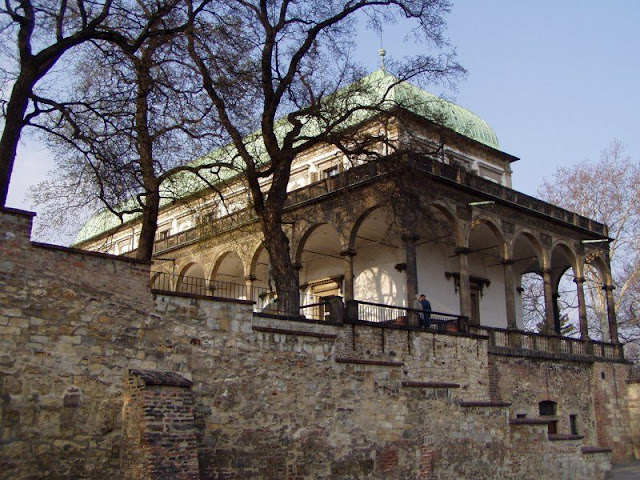
.jpg)














































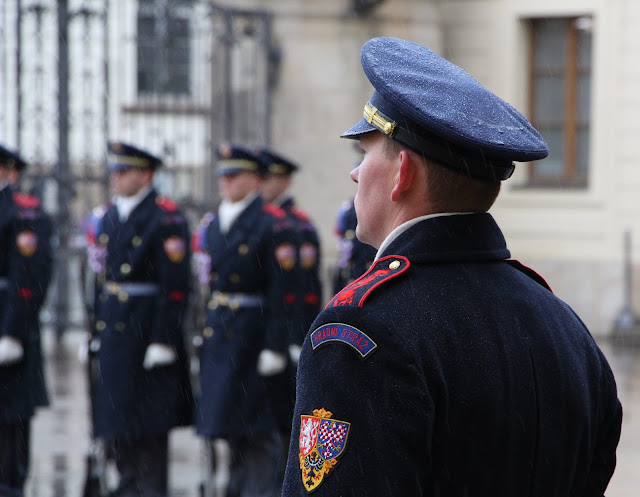

































.jpg)














.jpg)






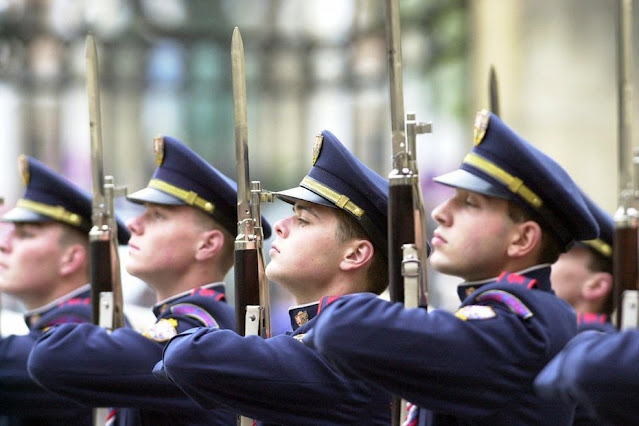








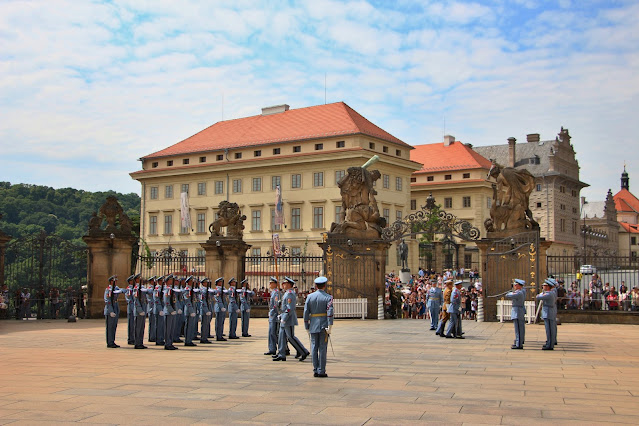








































































































.jpg)

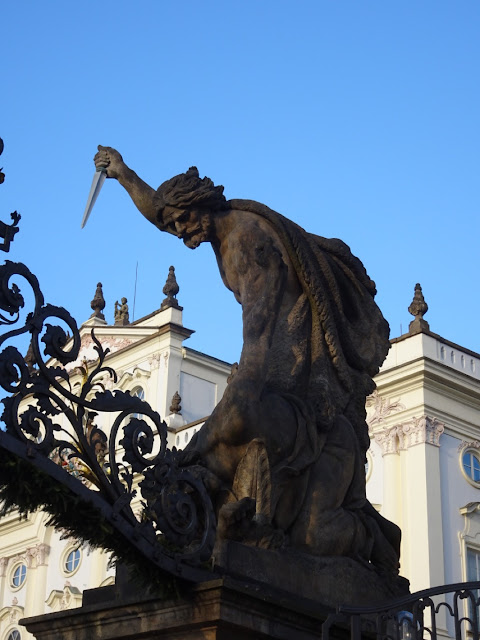












.jpg)

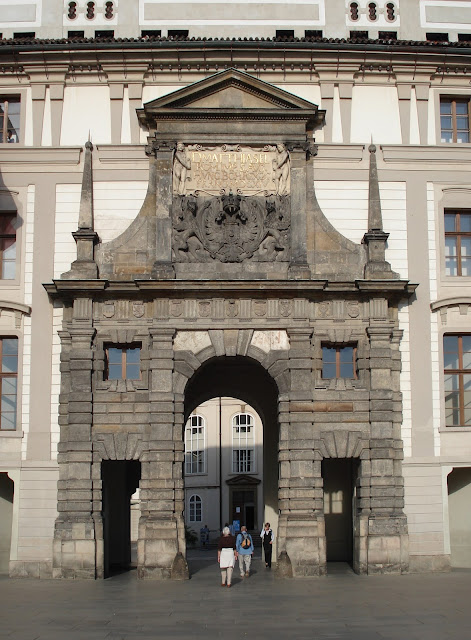






















_CoA.png)


























_celek.JPG)












.jpg)
.jpg)

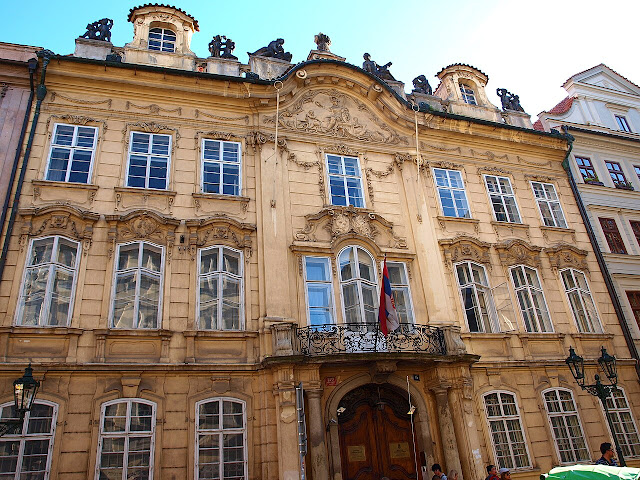



















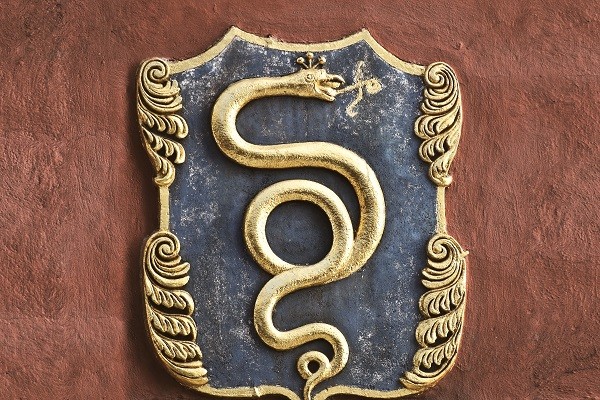













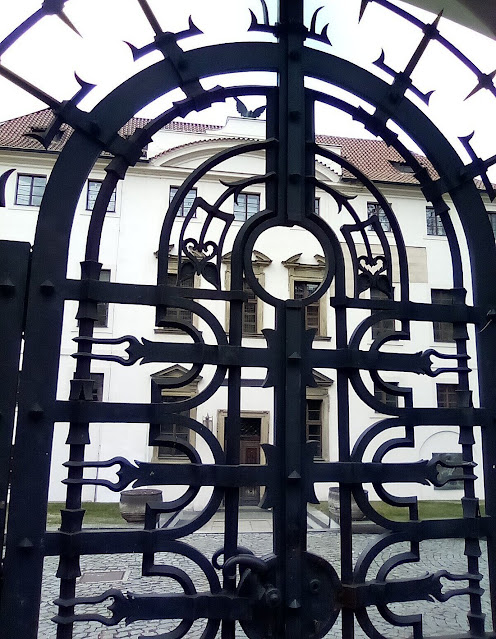














































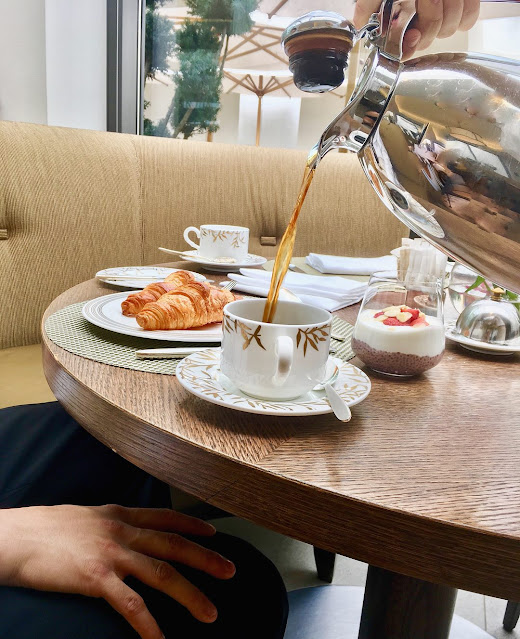


























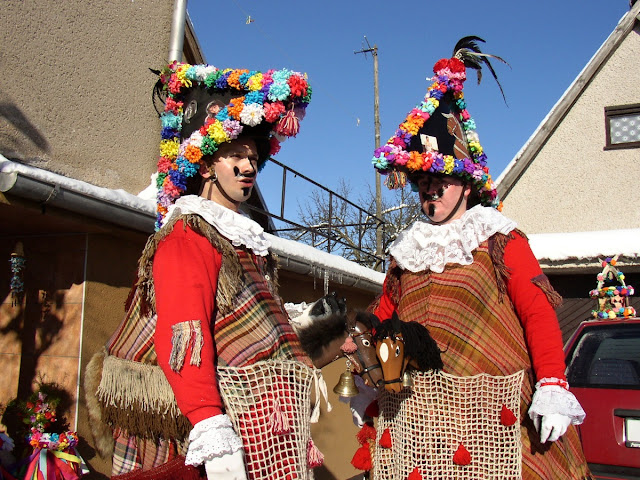

































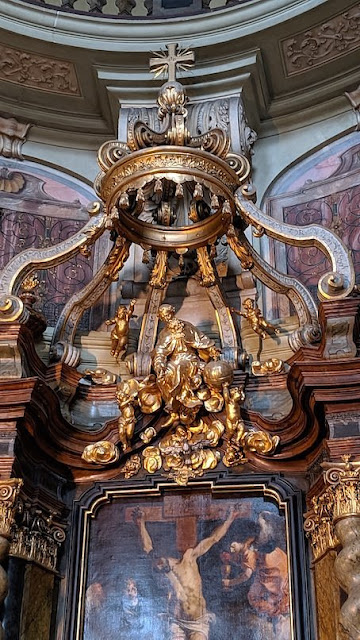


































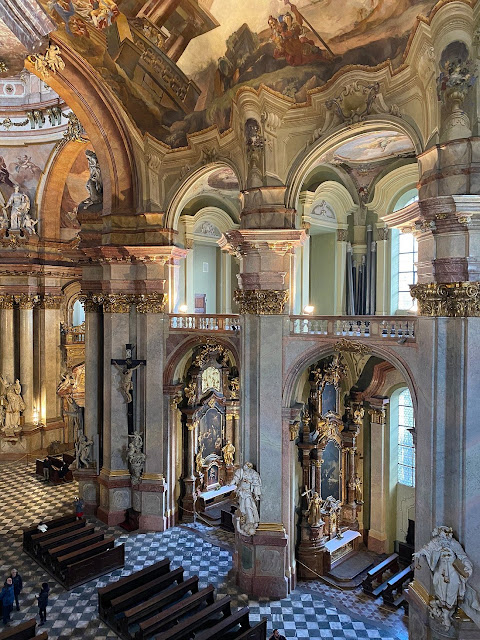





































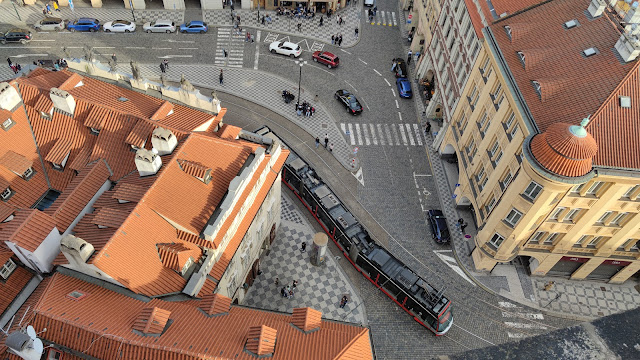













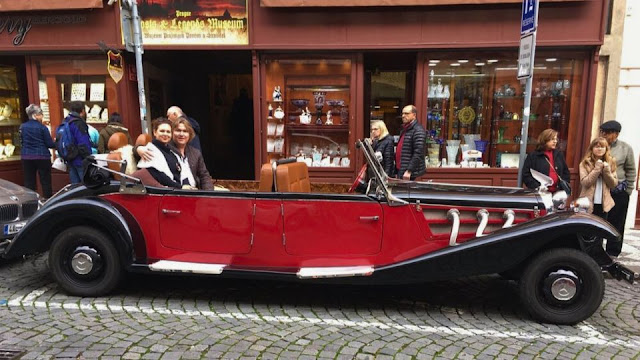








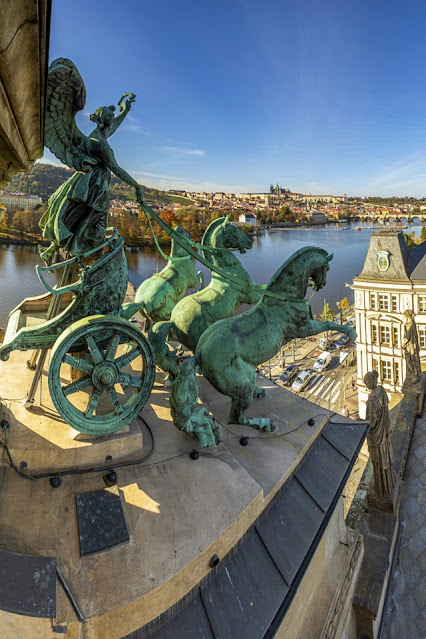















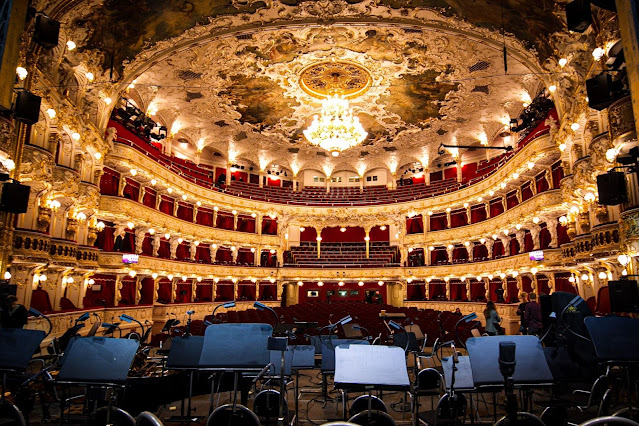






















































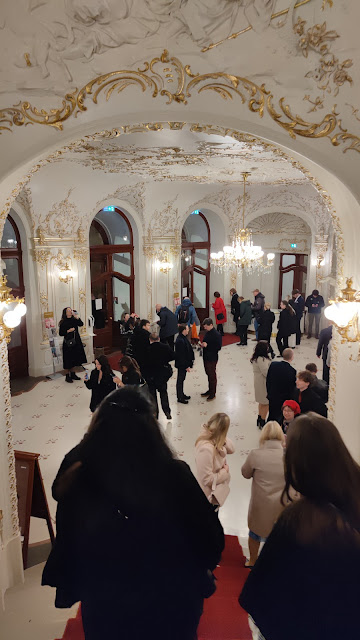























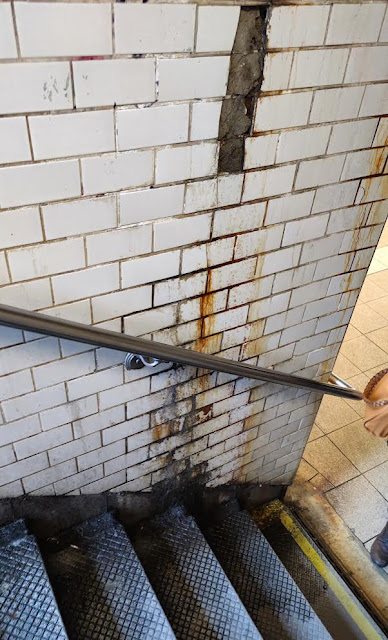


























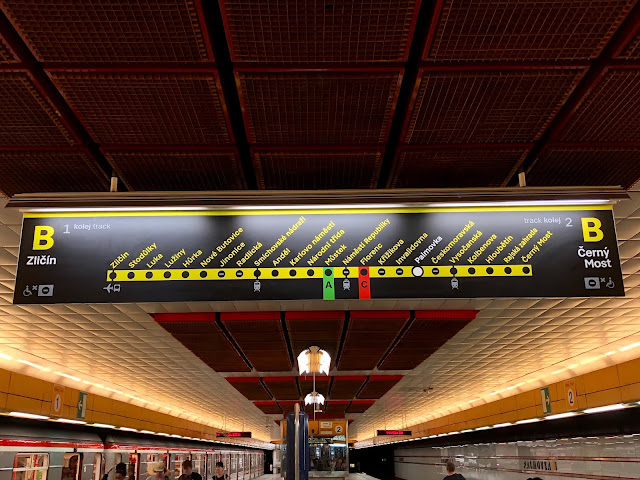



_02.jpg)

























































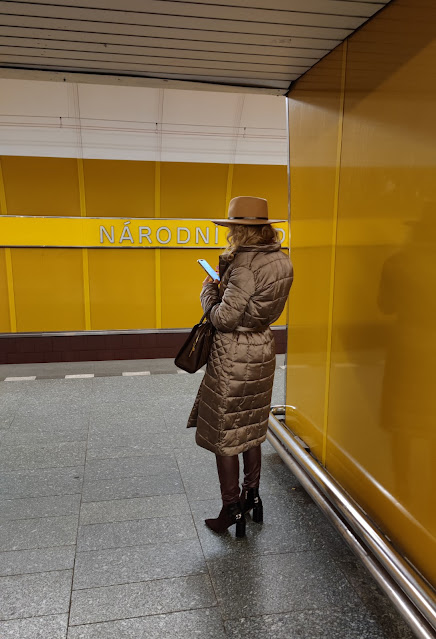






No comments:
Post a Comment
Don't be shy: leave your comments :)